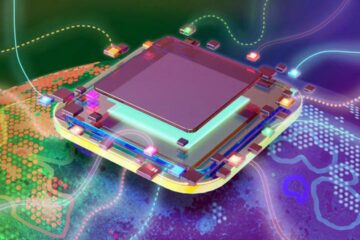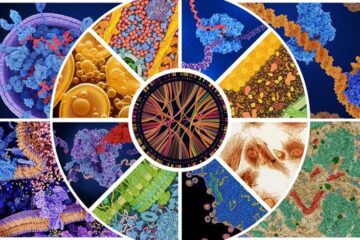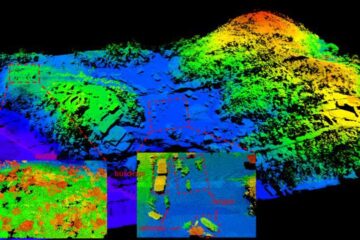NASA's Swift Sees Double Supernova in Galaxy

The galaxy, known as MCG +05-43-16, is 380 million light-years from Earth. Until this year, astronomers had never sighted a supernova popping off in this stellar congregation. A supernova is an extremely energetic and life-ending explosion of a star.
Making the event even more unusual is the fact that the two supernovae belong to different types. Supernova 2007ck is a Type II event – which is triggered when the core of a massive star runs out of nuclear fuel and collapses gravitationally, producing a shock wave that blows the star to smithereens. Supernova 2007ck was first observed on May 19.
In contrast, Supernova 2007co is a Type Ia event, which occurs when a white dwarf star accretes so much material from a binary companion star that it blows up like a giant thermonuclear bomb. It was discovered on June 4, 2007. A white dwarf is the exposed core of a star after it has ejected its atmosphere; it’s approximately the size of Earth but with the mass of our Sun.
“Most galaxies have a supernova every 25 to 100 years, so it’s remarkable to have a galaxy with two supernovae discovered just 16 days apart,” says Stefan Immler of NASA’s Goddard Space Flight Center. In 2006 Immler used NASA’s Swift satellite to image two supernovae in the elliptical galaxy NGC 1316, but both of those explosions were Type Ia events, and they were discovered six months apart.
The simultaneous appearance of two supernovae in one galaxy is an extremely rare occurrence, but it’s merely a coincidence and does not imply anything unusual about MCG +05-43-16. Because the two supernovae are tens of thousands of light-years from each other, and because light travels at a finite speed, astronomers in the galaxy itself, or in a different galaxy, might record the two supernovae exploding thousands of years apart.
Media Contact
All latest news from the category: Physics and Astronomy
This area deals with the fundamental laws and building blocks of nature and how they interact, the properties and the behavior of matter, and research into space and time and their structures.
innovations-report provides in-depth reports and articles on subjects such as astrophysics, laser technologies, nuclear, quantum, particle and solid-state physics, nanotechnologies, planetary research and findings (Mars, Venus) and developments related to the Hubble Telescope.
Newest articles

A universal framework for spatial biology
SpatialData is a freely accessible tool to unify and integrate data from different omics technologies accounting for spatial information, which can provide holistic insights into health and disease. Biological processes…

How complex biological processes arise
A $20 million grant from the U.S. National Science Foundation (NSF) will support the establishment and operation of the National Synthesis Center for Emergence in the Molecular and Cellular Sciences (NCEMS) at…

Airborne single-photon lidar system achieves high-resolution 3D imaging
Compact, low-power system opens doors for photon-efficient drone and satellite-based environmental monitoring and mapping. Researchers have developed a compact and lightweight single-photon airborne lidar system that can acquire high-resolution 3D…





















